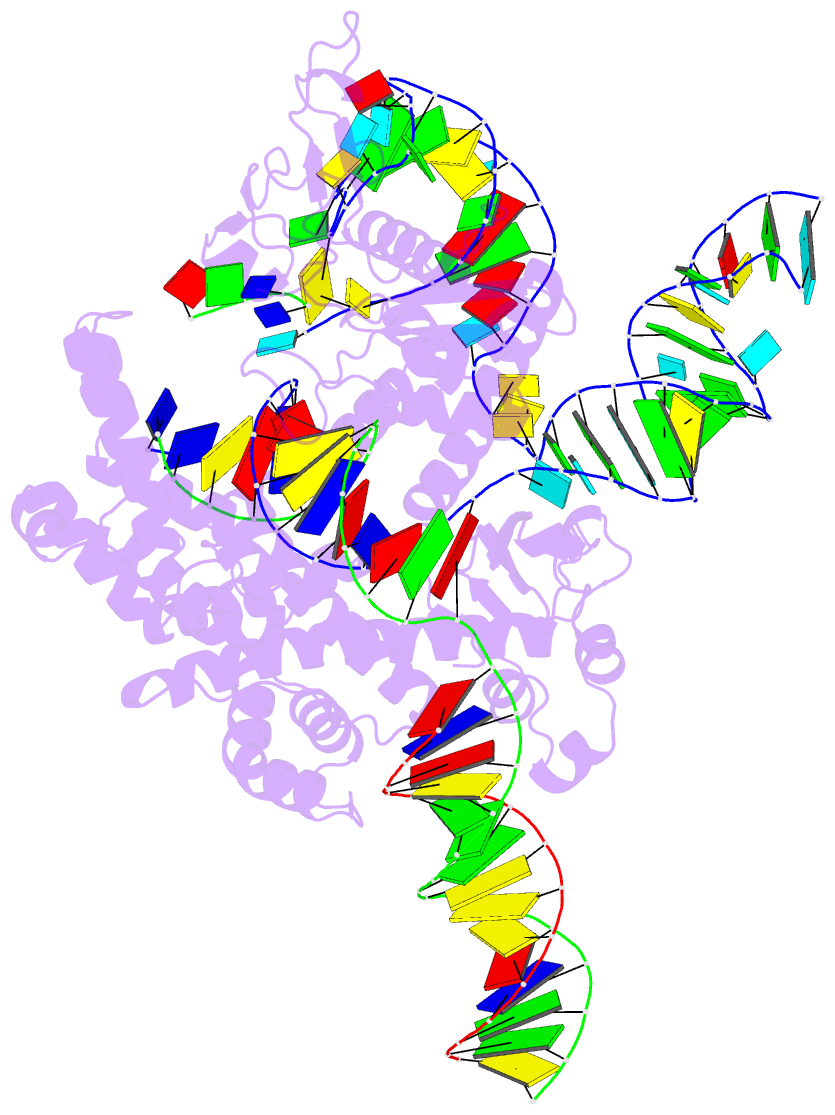Summary information and primary citation
- PDB-id
- 8gkh; SNAP-derived features in text and JSON formats;
DNAproDB
- Class
- RNA binding protein-RNA-DNA
- Method
- cryo-EM (2.7 Å)
- Summary
- Structure of the spizellomyces punctatus fanzor (spufz) in complex with omega RNA and target DNA
- Reference
- Saito M, Xu P, Faure G, Maguire S, Kannan S, Altae-Tran H, Vo S, Desimone A, Macrae RK, Zhang F (2023): "Fanzor is a eukaryotic programmable RNA-guided endonuclease." Nature, 620, 660-668. doi: 10.1038/s41586-023-06356-2.
- Abstract
- RNA-guided systems, which employ complementarity between a guide RNA and target nucleic acid sequences for recognition of genetic elements, play a central role in biological processes in both prokaryotes and eukaryotes. For example, the prokaryotic CRISPR-Cas systems provide adaptive immunity for bacteria and archaea against foreign genetic elements. Cas effectors, like Cas9 and Cas12, perform guide RNA-dependent DNA cleavage1. Although a few eukaryotic RNA-guided systems have been studied so far, such as RNA interference2 and ribosomal RNA modification3, it remains unclear whether eukaryotes have RNA-guided endonucleases. Recently, a new class of prokaryotic RNA-guided system (termed OMEGA) was reported4,5. The OMEGA effector TnpB is the putative ancestor of Cas12 and has RNA-guided endonuclease activity4,6. TnpB may also be the ancestor of the eukaryotic transposon-encoded Fanzor (Fz) proteins4,7, raising the possibility that eukaryotes are also equipped with CRISPR-Cas/OMEGA-like programmable RNA-guided endonucleases. Here we report the biochemical characterization of Fz, showing that it is an RNA-guided DNA endonuclease. We also show that Fz can be reprogrammed for human genome engineering applications. Finally, we resolved the structure of Spizellomyces punctatus Fz (SpuFz) at 2.7Å using cryogenic-electron microscopy, revealing the conservation of the core regions among Fz, TnpB and Cas12, despite diverse cognate RNA structures. Our results show that Fz is a eukaryotic OMEGA system, demonstrating that RNA-guided endonucleases are present in all three domains of life.





